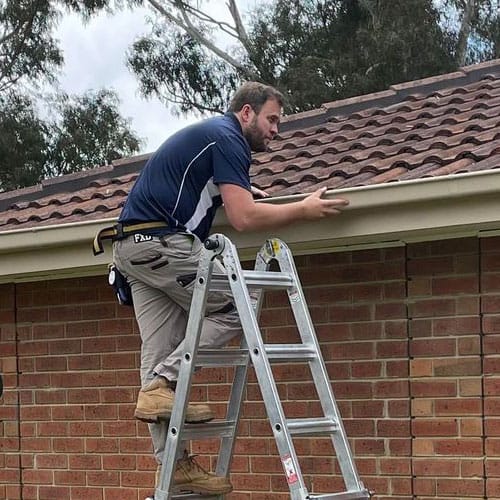So, you’ve received your property inspection report from TSB Inspections – a crucial step in understanding the true condition of your potential new home. But as you flip through the pages, you might encounter terms like “major defect” and “minor defect.” What do these really mean for you as a buyer, or for the vendor selling the home? Let’s break it down.
At TSB Inspections, our goal is to provide you with a clear and comprehensive understanding of the property’s health. We categorize defects to help you prioritise and make informed decisions.
What is a Minor Defect?
Think of minor defects as the everyday wear and tear or cosmetic issues that are generally easy and relatively inexpensive to fix. They don’t typically impact the structural integrity or safety of the home, nor do they usually require immediate attention.
Examples of Minor Defects:
-
- Cracked or chipped wall tiles: Often a cosmetic issue, easily replaced.
-
- Sticky doors or windows: Usually a simple adjustment or lubrication is all that’s needed.
-
- Minor cracking in plasterwork: Common due to settlement and often simple to patch and paint.
-
- Worn paintwork: A purely aesthetic concern.
-
- Loose door handles or cabinet hinges: Quick fixes with a screwdriver.
-
- Leaky taps: Often just requires a new washer.
-
- Localised wood rot in non-structural areas (e.g. window frames or external trim): Can usually be repaired with treatment or replacement of the affected section, provided the cause (like poor drainage or old sealant) is also addressed.
What Minor Defects Mean for the Buyer:
For buyers, minor defects are generally not deal-breakers. They’re often things you’d expect to address when moving into any used property. While it’s good to be aware of them, they typically won’t impact your ability to secure a loan or significantly alter the property’s value. You might factor in the cost of addressing a few of these into your budget for minor renovations or maintenance.
That said, some minor defects can be early indicators of deeper issues—like wood rot signalling poor drainage or moisture ingress—so it’s important to review them in context and ask questions when something doesn’t feel quite right.
What Minor Defects Mean for the Vendor:
For vendors, minor defects usually don’t deter serious buyers. Addressing a few visible minor defects before listing your home can actually be a good strategy, as it can make the property appear better maintained and cared for, potentially leading to a quicker sale or a better offer. However, not fixing them isn’t likely to derail a sale.
What is a Major Defect?
Major defects are a different beast entirely. These are significant issues that can impact the structural integrity, safety, or habitability of the property. They often require substantial repairs, can be costly, and may pose a risk to occupants if left unaddressed.
Examples of Major Defects:
-
- Significant structural cracks in foundations or load-bearing walls: These can indicate serious settlement issues or structural instability.
-
- Major roof damage (e.g., widespread leaks, compromised trusses): Can lead to extensive water damage, mould, and compromise the entire structure.
-
- Extensive active water penetration or rising damp: Can cause timber rot, mould, and damage to the building fabric.
-
- Serious drainage problems leading to water pooling around the foundation: Can undermine the foundation over time.
-
- Termite or significant pest infestations causing structural damage: Can severely weaken timber elements.
-
- Compromised electrical wiring (e.g., uncertified, exposed, or faulty wiring): A significant safety hazard.
-
- Major plumbing issues (e.g., burst pipes, significant sewerage problems): Can cause extensive damage and health hazards.
-
- Asbestos-containing materials in poor condition or friable: A serious health risk.
What Major Defects Mean for the Buyer:
For buyers, major defects are a red flag and require careful consideration.
-
- Negotiation Power: These defects provide strong grounds for negotiation on the purchase price. You’ll need to factor in the potentially significant cost of repairs.
-
- Financial Impact: Be prepared for potentially substantial expenses. It’s wise to get quotes from qualified tradespeople for rectification works before proceeding.
-
- Lending Implications: Some lenders may be hesitant to finance a property with significant structural or safety defects until they are addressed.
-
- Due Diligence: A major defect should prompt further investigation, possibly involving specialists (e.g., structural engineers, pest controllers).
It’s crucial to understand that buying a property with major defects means inheriting those problems. You need to be prepared for the financial and logistical burden of rectifying them.
What Major Defects Mean for the Vendor:
For vendors, the discovery of major defects can significantly impact the sale.
-
- Reduced Sale Price: Buyers will expect a substantial reduction in the asking price to cover the cost of repairs.
-
- Difficulty Selling: Some buyers may be completely deterred by major defects, limiting your pool of potential purchasers.
-
- Rectification Costs: Vendors might consider addressing major defects before listing or during negotiations to facilitate a sale, which can involve significant upfront costs.
At TSB Inspections, we provide detailed reports that clearly identify and categorise defects, giving you the clarity you need. We’ll explain the implications of each finding, empowering you to make informed decisions about your property journey.

Subfloor – wet areas showing water damage.
Understanding the difference between major and minor defects is paramount. It allows buyers to approach negotiations with confidence and vendors to prepare for a smooth and transparent sale process.
Your property inspection report shouldn’t be a puzzle. Let TSB Inspections provide the clarity you need, so you’re fully informed every step of the way


